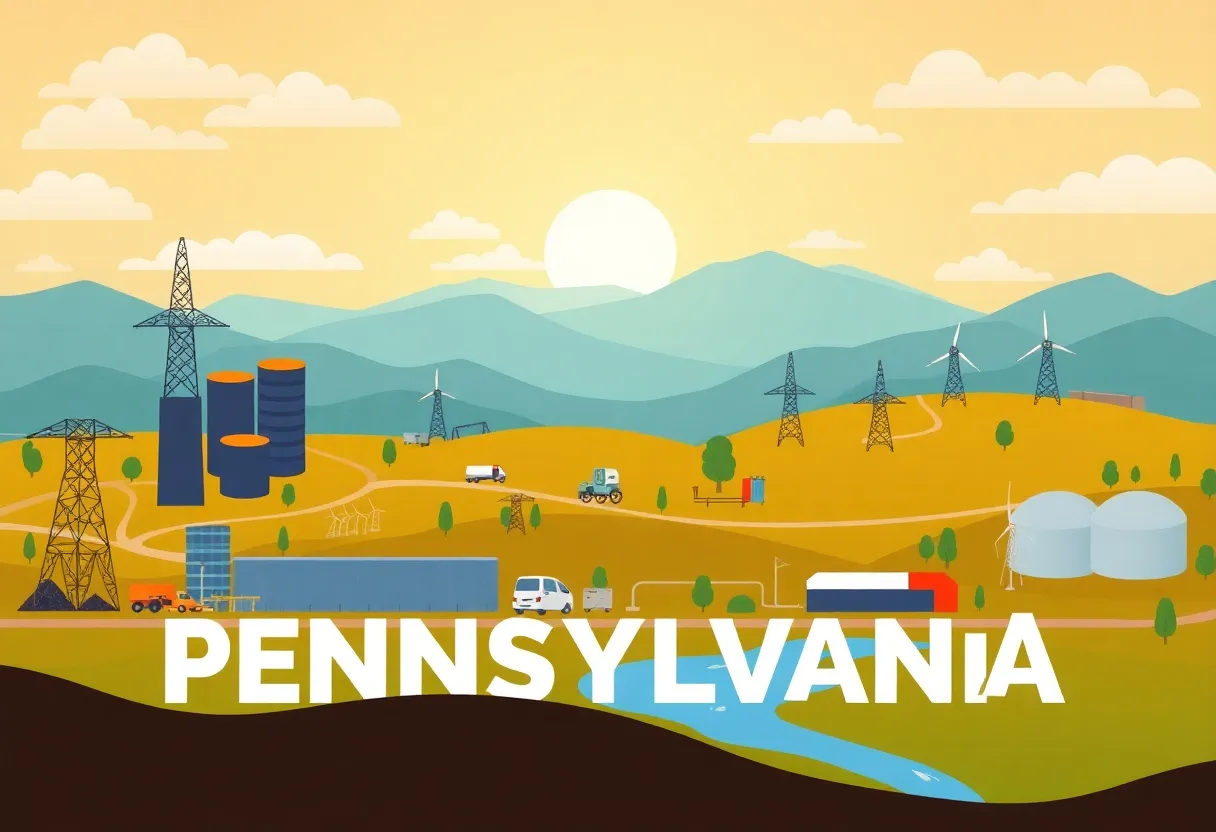News Summary
Pennsylvania faces a potential crisis as its net electricity exporter status is jeopardized by rising electricity demands from data centers. During a joint hearing, energy sector leaders discussed grid reliability, the need for new generation investments, and the implications of retiring generation resources. With data centers projected to account for 16% of electricity demand by 2039, the need for significant energy infrastructure developments is urgent. Ongoing initiatives aim to bolster the state’s energy landscape, though rising electricity costs pose additional challenges for consumers.
Pennsylvania is facing a potential crisis as its status as a net electricity exporter is threatened by the escalating energy demands from data centers and other significant electricity-consuming entities. This situation was the focal point of discussions among energy sector leaders during a joint hearing held by the Senate Environmental Resources and Energy Committee alongside the Consumer Protection and Professional Licensure Committee.
As electricity demands rise, key topics addressed included matters of grid reliability, the overall adequacy of power resources, the dynamics of the capacity market, and the pressing requirement for new generation investments. Lawmakers and industry experts expressed concerns regarding the strain that retiring generation resources and the unprecedented growth of data centers are imposing on the state’s energy landscape.
In a recent report by PJM, the regional transmission organization overseeing electricity in the area, it was highlighted that approximately 40 GW of generation capacity is at risk of retirement over the coming years. This projection comes as the PJM capacity auction has experienced significant price hikes driven by this increasing demand, the retirement of energy plants, and the greater reliance on intermittent renewable energy resources.
Currently, data centers account for about 4% of the total electricity demand in Pennsylvania, but projections suggest this figure could surge to 16% by the year 2039. To address these challenges, new generation projects are being prioritized, including seven developments within Pennsylvania that involve five natural gas facilities, one nuclear energy site, and one wind project. These initiatives are part of PJM’s Reliability Resource Initiative aimed at bolstering grid stability.
Capacity concerns are heightened as forecasts predict summer peak loads could reach around 154,000 MW, with potential spikes climbing to 166,000 MW. Recent improvements have been made regarding the interconnection backlog, which has decreased dramatically from 200,000 pending projects to nearly 70,000, with a goal for resolution by the next year.
In terms of private investments in energy infrastructure, a notable $10 billion project is underway to convert the defunct Homer City coal plant into a natural gas-powered data center campus. Such developments are indicative of the state’s shifting energy paradigm, particularly as Pennsylvania transitions to relying on natural gas for 59% of its electricity generation, simultaneously closing coal plants to comply with cleaner air regulations.
The financial impact on Pennsylvania consumers is also significant, with electricity bills on the rise. For instance, customers of the PECO utility are experiencing a 10% increase in their electricity charges for 2025, and further increases are anticipated in 2026. Amidst these economic impacts, the state’s energy grid is grappling with persistent challenges surrounding electricity demand and supply balance, as well as the need to replace traditional generation resources.
In response to the shifting energy landscape, Governor Josh Shapiro’s administration has taken steps including filing a complaint against PJM regarding high capacity auction prices, alongside promoting initiatives aimed at enhancing energy efficiency and reliability within the grid. However, as the expansion of data centers integrates into the state’s energy framework, it raises new concerns regarding regulatory compliance and the adequacy of grid interconnections.
To summarize, Pennsylvania stands at a critical juncture regarding its electricity export status, facing rising challenges from data centers and a need for substantial investments in new generation resources. Ensuring the stability and reliability of its electricity supply will be vital as the state navigates these rapid changes in its energy landscape and adapts to evolving consumer demands.
Deeper Dive: News & Info About This Topic
- The Conversation: High Electricity Bills in Pennsylvania
- Wikipedia: Electricity in the United States
- Washington Post: AI and Natural Gas in Pennsylvania
- Google Search: Pennsylvania energy policy
- Fox Baltimore: Pennsylvania Senator on Energy Drain
- Google Scholar: Pennsylvania electricity data centers
- JD Supra: Pennsylvania PUC and Data Centers
- Encyclopedia Britannica: Electricity
- Marcellus Drilling: AI Data Centers in Western PA
- Google News: Data centers Pennsylvania

Author: STAFF HERE PHILADELPHIA WRITER
The PHILADELPHIA STAFF WRITER represents the experienced team at HEREPhiladelphia.com, your go-to source for actionable local news and information in Philadelphia, Philadelphia County, and beyond. Specializing in "news you can use," we cover essential topics like product reviews for personal and business needs, local business directories, politics, real estate trends, neighborhood insights, and state news affecting the area—with deep expertise drawn from years of dedicated reporting and strong community input, including local press releases and business updates. We deliver top reporting on high-value events such as Mummers Parade, Philadelphia Flower Show, and Thanksgiving Day Parade. Our coverage extends to key organizations like the Greater Philadelphia Chamber of Commerce and United Way of Greater Philadelphia, plus leading businesses in telecommunications, food services, and healthcare that power the local economy such as Comcast, Aramark, and Children's Hospital of Philadelphia. As part of the broader HERE network, we provide comprehensive, credible insights into Pennsylvania's dynamic landscape.





